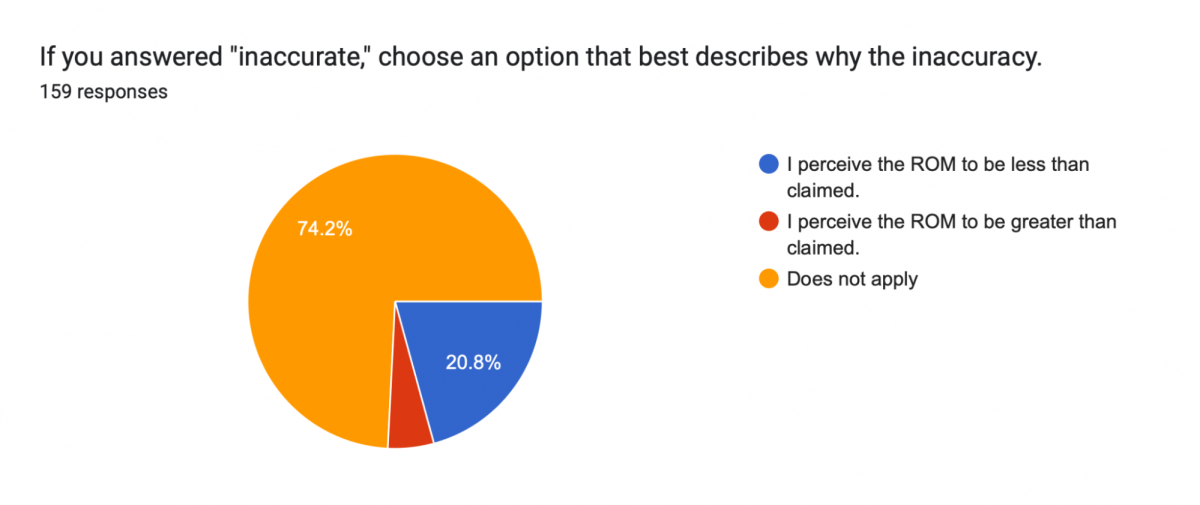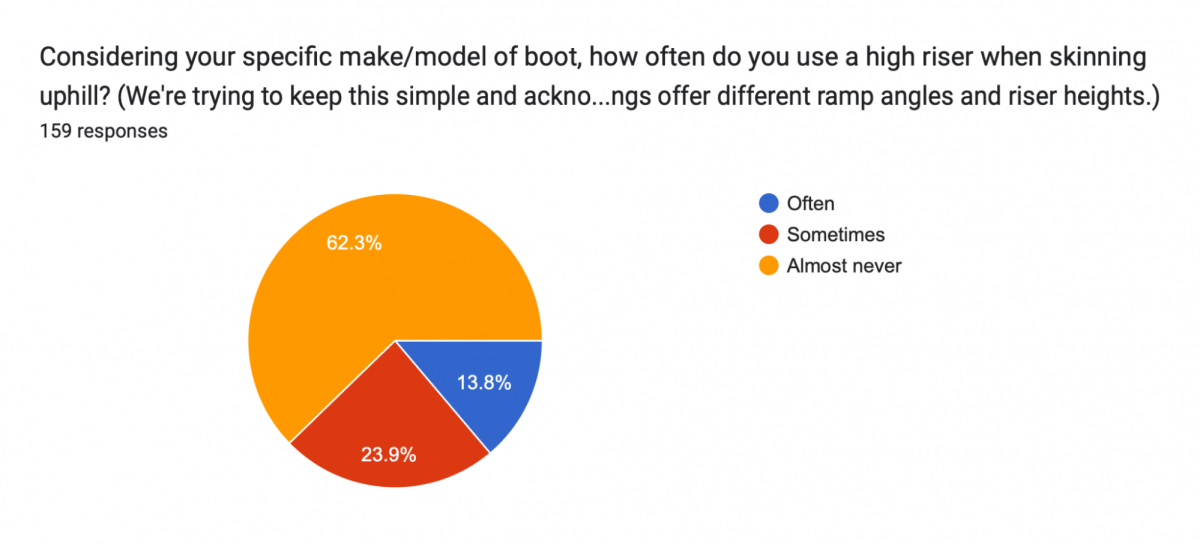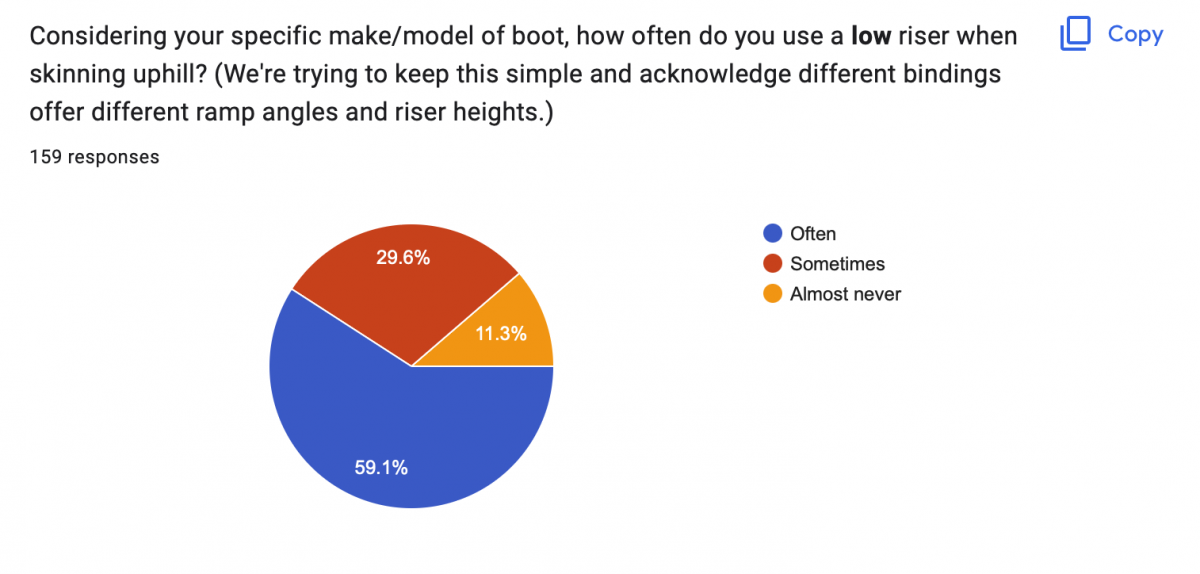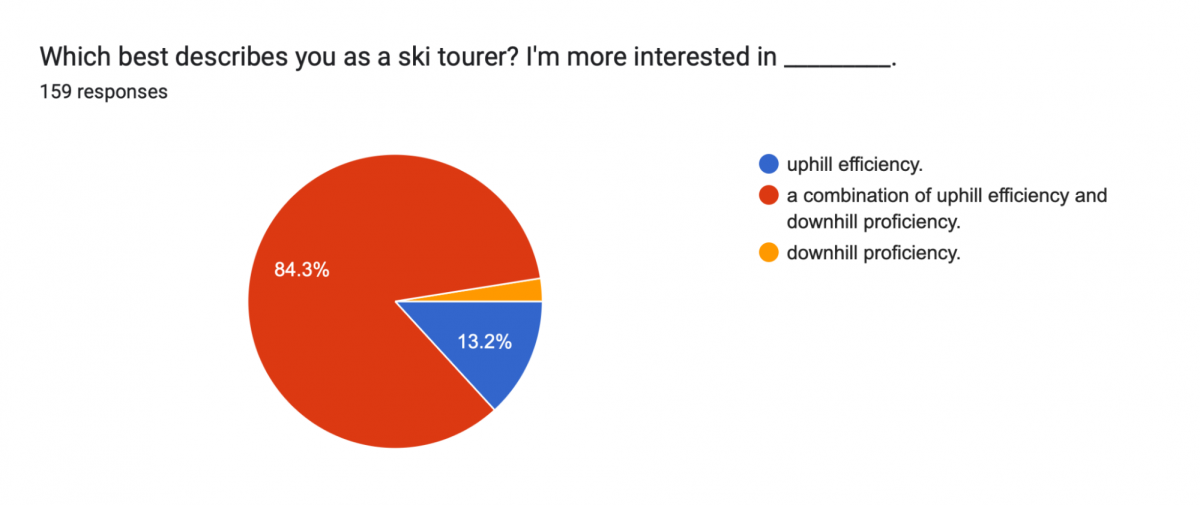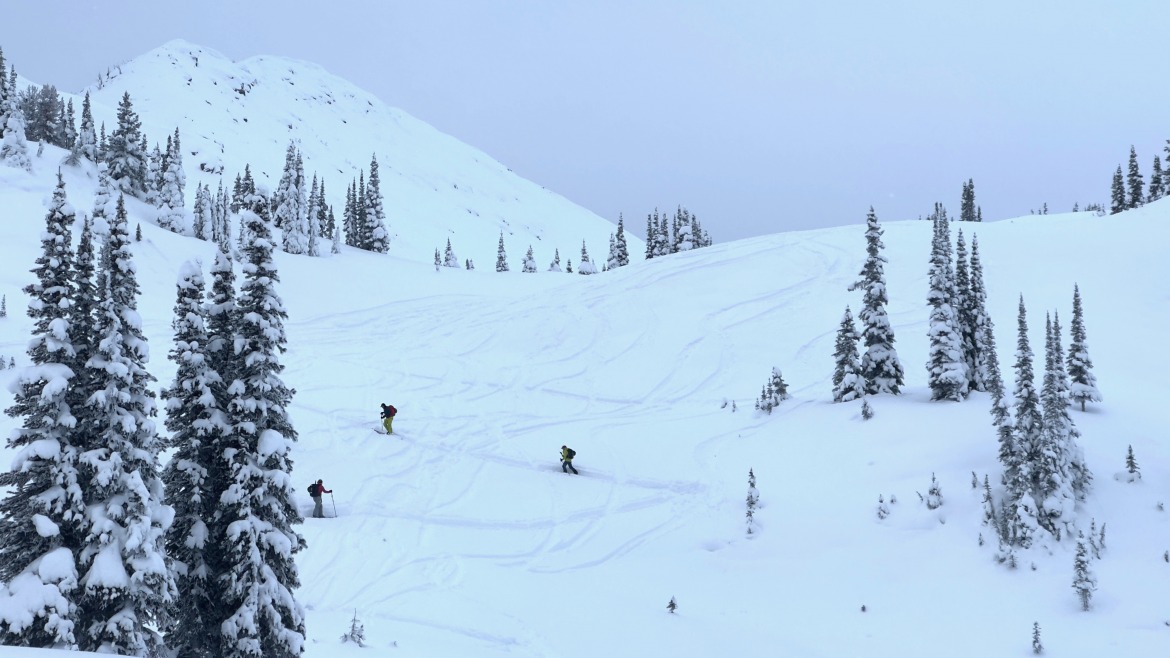
Let the zigging and the zagging begin. Boot range of motion comes into the play during the uphill portion of our efforts.
If you are finicky about a boot’s range of motion, you’ve got plenty of options out there. Here’s a look at some of the information collected from our range of motion survey.
Range of Motion (ROM) matters for backcountry ski boots. Think of it as the ability of the ankle to move (relatively) unimpeded when secured in a ski boot set in walk/touring mode. Setting some ground rules first, we’ll assume we come to the sport with expectations, needs, and desires regarding gear. But this much is true: if you are staying true to the human-powdered concept of backcountry skiing, much of your time, maybe 90% of it, is spent working uphill on skins, booting, cramponing, and maybe practicing the art of vertical snowshoeing.
Ninety percent of a minute, an hour, a day, that’s a lot of time: best to find a comfortable boot meeting your needs.
Digging into the “Range” of the ROM
What got me thinking about ROM and how manufacturers quantify a boot’s ROM began with the Dynafit TLT X last spring. Here’s what I wrote in a first look:
“The Dynafit TLT X is relatively minimal in weight and has a pivot at the ankle that feels frictionless. Other boots claim a larger range of motion (ROM), Travers Carbons (80 degrees), S-Lab MTN Summit (75 degrees), Tecnica Zero G Peak (75 degrees), and Scarpa F1LT (72 degrees). At 60m degrees for the TLT X, I’m not noticing any deficiencies in ROM. If 60 degrees is the new 70 degrees or 75 for that matter, then so be it. I have a tough time discerning the ROM difference between the S-Lab MTN Summits and TLT Xs.”
I’ll call the difference between 75 degrees and 72, when it comes to a ski boot’s ROM, as near identical: we’re not talking about the mirror on the Hubble Telescope or landing a Mars probe too hard on the red planet’s surface. It’s a ski touring boot.
But the difference between, say, 60 degrees in the TLT X and 75 in the S-Lab MTN Summit should be discernible. Both boots skin/walk great, and their ROM lies somewhere between the claimed 60 and 75, respectively.
On a recent hut trip, I brought a 183cm Atomic Backland 107 and a 184cm DPS Pagoda Tour 112 RP for the expected soft snow powder conditions. With these larger skis, I like a slightly bigger boot. I don’t need super stiff, just more support: I opted for the Fischer Transalp Pro. This boot is an in-between-er. In other words, it provides more support than a 1kg class boot but falls off in stiffness compared to boots like the Tecnica ZG Tour Pro and Scarpa Quattro SL (two four-buckle boots I have been experimenting with lately).
The ROM of the Transalp Pro is stellar. But, it is not the claimed 80 degrees. I wrote this last season:
“Although the Transalp Pro is aspirational, the cuff rotation, understandably with a stiffer boot, is reduced. The Fischer promo video on their site claims 80 degrees for a range of motion, while some other websites restate the 80 degree ROM claim. Cripple Creek BC states 65 degrees – and I’d agree with that.”
During those recent six days in the Transalp Pro, striding in the best-ever set skin tracks I’ve been on, I used a low riser sparingly and made good use of the boot’s ample ROM while in flat mode. The super fit skier from Colorado who was often ahead of me on the skinner was in a ZG Tour Pro (claimed ROM 55 degrees) and slotted into his low riser using a Marker Alpinist binding much, if not all, of the time. (I attribute my flat mode preference to boot choice.)
We all likely expect less ROM in a stiff freeride oriented boot and more in a lighter speed-touring boot. And the survey says, according to the ROM respondents, that claimed ROM is most often accurate.
A note, we did not ask survey takers about their specific liner. We assume some skiers have replaced stock liners with an aftermarket choice. (I use stock liners in all but one boot, which is not discussed here.) Additionally, we did not ask about ankle ROM — we understand that some backcountry skiers experience limited ROM due to something biomechanical.
And, as the pie chart illustrates below, of those who find an inaccuracy in the claimed ROM, most perceive the ROM to be less than claimed.
Of those who claimed inaccurate and less than claimed, all but six skiers were on stiffer freeride-oriented boots.
But, as you can imagine, many skiers in these stiffer free-ridey boots thought the claimed ROM was accurate. We’ve got nine skiers saying the Tecnica ZG Tour Pro’s (including one skier in the Scout and one in the Tour) 55 degrees is less than claimed. Sixteen skiers in this same boot say “accurate” as claimed (this includes a Scout W). Let democracy flourish: we can agree to disagree. Perceived ROM is up to the individual.
High Risers
Whenever risers are passingly mentioned in a WildSnow piece, I get semi-nervous about the ensuing onslaught of comments. Risers and riser use seem to matter… a lot. Maybe even more than a lot to some.
I take the road of use risers if you want. And if the skintrack is so steep it demands riser use, and still, you refuse, I suppose setting a new skintrack is an option.
That said, nearly 64 percent of the kind folks who responded said they seldom use high risers. That could mean a lot of things, but it likely means, as a community, less than steep skintracks are the norm, or that lighter high ROM boots are widely used. (Norms likely deviate zone to zone and region to region.)
Twenty-two skiers opted for “often” use a high riser. Almost universally, these folks are in four-buckle boots.
Closing it out
We’ll leave the discussion of what may impede a particular boot’s ROM for another time. But, when asked to describe the limiting factors to a boot’s ROM, we had wide-ranging responses. There was “slightly squeezing my ankles,” on a Hoji Tour, to “Cuff/lower interference, liner stiffness,” on a claimed 80 degree ROM boot the respondent stated was an accurate claim.
The info presented only captures a tiny portion of the backcountry skiers out there. But, the survey makes this clear: a combination of uphill efficacy and downhill proficiency is in demand.
More on the ROM and limiting factors later on — have a good weekend.
As always, chime in. If risers matter, which they evidently do, then ROM also has a place in the conversation.
Jason Albert comes to WildSnow from Bend, Oregon. After growing up on the East Coast, he migrated from Montana to Colorado and settled in Oregon. Simple pleasures are quiet and long days touring. His gray hair might stem from his first Grand Traverse in 2000 when rented leather boots and 210cm skis were not the speed weapons he had hoped for. Jason survived the transition from free-heel kool-aid drinker to faster and lighter (think AT), and safer, are better.


